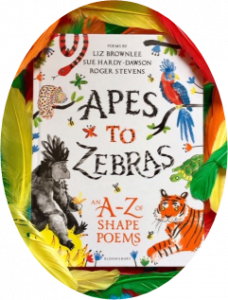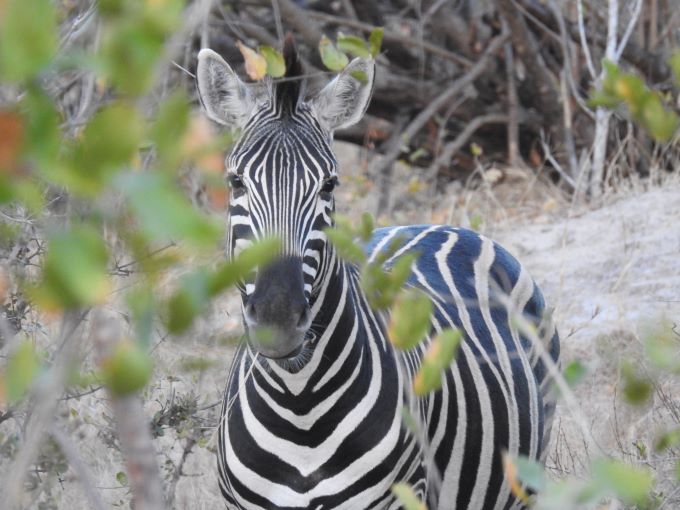Apes to Zebras

By Liz Brownlee, Sue Hardy- Dawson, Roger Stevens
Yeah! Another new book on my shelf. Thank you to Kylie Watson for introducing me to this awesome book but also for creating these brilliant teaching ideas. I only added a couple of ideas.
I am lucky to work with Kylie at Dana St PS in Ballarat. In her Learning Specialist role Kylie and I collaborate about all things related to Mathematics. I am sure you will agree with me, her expertise is literacy too!
We decided to create our own A-Z of learning experiences for this book. Enjoy!
A
Annotate your thinking about the poem titled Koala.
Ask – What questions would you ask the authors of these poems.
B
Background knowledge – What do you know about the topic in the poem titled Emperor Penguin? How will you find out more information?
C
Categorise your thinking – Using the poem Paradox Frog research other amphibians that would fit in this species category.
D
Draw – Illustrate a picture that conveys ideas and feelings from the poem Gulls.
E
Express Yourself – Draw or use an iPad to take photos of the emotions you feel when reading certain poems. Why do you feel these emotions?
F
Figurative Language – Identify the figurative language within the poem titled Zebra.
G
Geography – Using the poem titled Quokka, locate on a map where they inhabit.
H
Hunt – Look for adjectives, nouns, adverbs, verbs, or high frequency words in the poems.
I
I Wonder… – Wondering about the poem Bees or any other animals within the poems.
J
Jot down your thinking from the poem Otter.
Justify your selection of your favourite poem.
K
K-W-L – Create a K-W-L chart on the animal in the poem titled Spider.
- What I know?
- What I want to learn?
- What I learned?
L
Label – Draw the animal in the poem titled Stick Insect and label the parts of the animal.
Listen to the author read the poems.
Liz Brownlee reads her poem Narwhal
https://www.youtube.com/watch?v=B7f6Yg8sBeo
Sue Hardy-Dawson reads Crocodile
https://www.youtube.com/watch?v=or44hgLgTBE
Roger Stevens reads Tiger
https://www.youtube.com/watch?v=VIstX6RDWgk
M
Measurement – Use Giraffe poem to identify mathematical language used. Measure the height of a giraffe and compare to student heights.
N
Nouns – Write down the nouns you can associate with Whale poem. Can you think of adjectives to describe the poem?
O
Opinions – Discuss different options formed from the poem Hedgehog.
Objects – Collect objects to provide clues for a poem.
P
Purpose – Why did the author write this poem? Persuade, inform, or entertain.
Q
Questioning – What deeper thinking questions can be developed form the poem titled Parrots.
Quick Draw – Quickly draw clues related to one of the poems. Can you buddy guess the poem?
R
Rhyming – Identify the rhyming words in the poem Grasshopper
S
Shape Poem – Create your own shape poem to publish and share.
Survey – Use Survey Monkey to find out people’s favourite poem.
Synonyms – Write down all the adjectives you can see in the poem tilted Unicorn. Write down synonyms to match.
T
Text Connections – make connections from the poems read. They can be text to self, text to text or text to world.
U
Unfamiliar words – Identify and define any unfamiliar words which you come across within the poems.
V
Venn Diagram – Create a Venn Diagram including two of the animals from different poems.
W
Word Splash – Create a word splash of everything we know about the animal in the poem Tiger.
XYZ
Y Chart – Create a Y chart for an animal in a poem; looks like, sounds like, smells like.
Enjoy and take care,
Andrea



Recent Comments